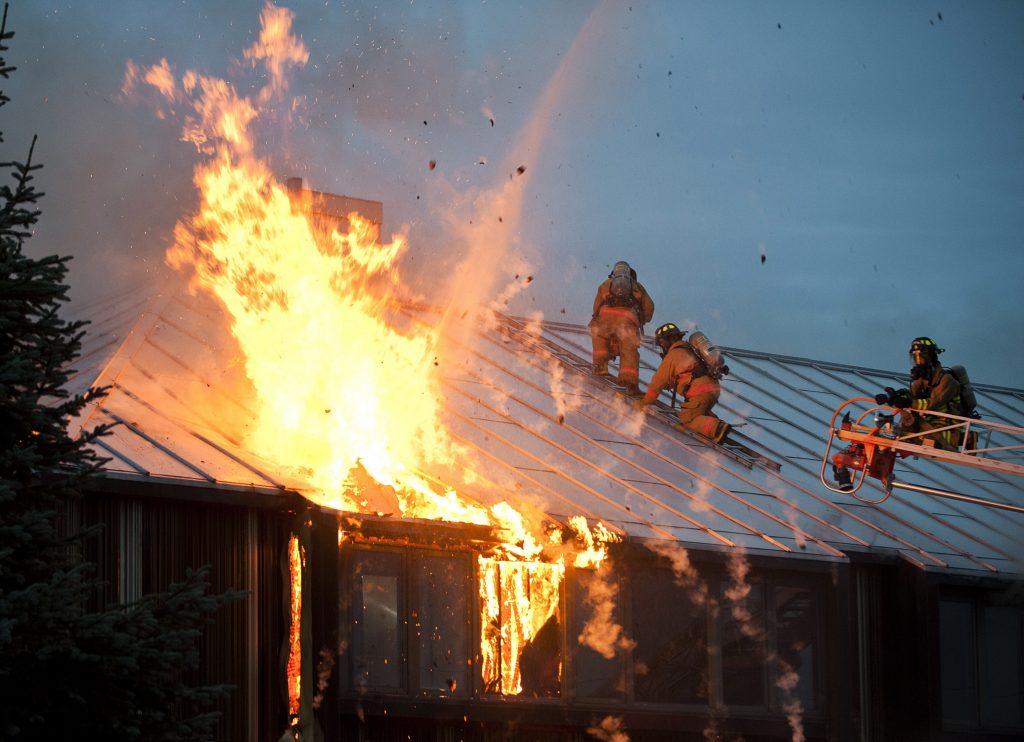
Fire resistance is one of the most critical factors to consider when selecting a skylight for your roof. The glazing material is particularly important since it must also be transparent and resistant to impact. Accordingly, the federal government has established fire standards for roof coverings that include skylights. These standards are a primary design consideration for Vtech’s skylights, as indicated by the results of its fire tests.
Image by David Mark from Pixabay
Fire Ratings
ASTM E108 is a national fire-response standard that evaluates roof coverings for both commercial and residential standards. It simulates the effects of a fire originating outside the building in various wind conditions. ASTM E108 classifies roof coverings into three categories based on their resistance to fire. Class A materials are effective against severe fires, Class B materials are effective against moderate fires, and Class C materials are effective against light fires. This test uses a gas burner or burning brands to simulate fire exposure and an inline blower to simulate wind of 12 mph. The incline of the test apparatus can also be adjusted from its default of five vertical inches per horizontal foot as required for a particular test.
The temperature of the gas burner depends on the classification being tested. Class A and B tests use a temperature within 50 degrees of 1,400°F, and Class C tests use a temperature within 50 degrees of 1,300°F. A Class A test uses a single brand built from 1” x 1” wood strips spaced 1/4” apart that measures 12” x 12” x 2 ¼”. Class B tests use two brands built from 1” x 1” strips spaced 1/4” apart that measure 6” x 6” x 2 ¼”. Class C tests use 20 1 ½” x 1 ½” x 25/32” strips with two 1/8” saw kerfs.
The results of these tests allow analysts to classify the roof covering. A listing report containing these details will be one of the final deliverables for certification projects. In the case of performance projects, the results are delivered in a test report.
Framing Methods
Vtech skylights consist of an aliphatic polyurethane frame that encapsulates the glass glazing. They’re designed to be incorporated into an integral curb with self-contained roof flashing flanges. These skylights are free of visual distortion and defects when they leave the factory and are also leakproof and weathertight.
Injection Molding
Reaction injection molding (RIM) is a process for manufacturing highly durable composite products. It’s most common in the auto industry but is also used to make Vtech skylights. The glazing is set into a steel mold while the chemical components are heated and mixed together to make the liquid aliphatic polyurethane. It flows around the glass and bonds to it, causing these materials to take the shape of the frame. The polyurethane cools quickly to form a solid piece that’s slightly flexible and highly durable.
Test Results
Vtech Skylights are classified as Class B roofing material according to ASTM E108. They are designed to be as fire-safe as possible, ensuring they won’t add fuel to a fire or even allow flames to penetrate the underside of the roof deck.
This Class B test used burning brands with a temperature of 1,400°F, which were set against the skylight’s edge. The incline had a standard 5:12 pitch and the blower provided the standard 12 mph wind, simulating a skylight in a roof during a real wildfire. The brand burned out after 80 minutes and was replaced by a second burning brand that was also allowed to burn out. Inspectors examined the skylight but failed to find any sign of fire penetrating into the building or spreading.